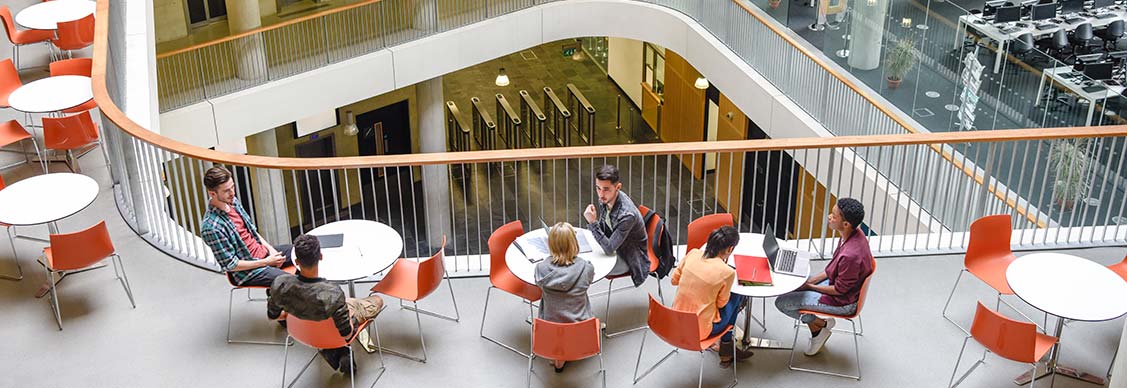Why co-working spaces are popping up on campus
Universities are looking to partner with flexible space providers amid a revenue crunch
Even during the co-working boom, flexible office space for working professionals never quite found its way to university campuses.
That’s now changing. Universities have been embracing partnerships with flexible space providers from Melbourne to Indiana, the start of which may be part of a longer-term shift in how higher education operates.
“Universities are recognising the value to the wider community of their real estate, facilities and talent,” says John Mortensen, education solutions lead in APAC for JLL’s Work Dynamics group. “Conversely, businesses bring innovation and energy to universities.”
Later this year, the University of Melbourne will offer a tech hub within its Melbourne Connect innovation precinct in partnership with the technology-focused flexible space provider YBF.
Purdue University in Indiana has partnered with Carr Workplaces to provide businesses with flexible office space at its new Discovery Park District that gives them unprecedented access to the school.
TusPark is a flex space initiative that’s part of Tsinghua University in Beijing, and now has facilities across China, Hong Kong, South East Asia, North and South America and the UK.
Restoring cashflow
As well as inviting industry to their doorsteps, flexible office space facilities are providing universities with a new revenue stream after COVID-19 travel restrictions dried up lucrative international student enrolments. Students switching to online courses and no longer living on campus have also hit the bottom line.
Australian universities took a A$1.8 billion (US$1.4 billion) revenue hit in 2020, and are set to lose another A$2 billion this year, according to Universities Australia.
U.S. colleges and universities have seen their largest revenue decline in decades. The Federal Reserve Bank of Philadelphia estimates that higher education institutions will lose revenue of up to US$115 billion over the next five years as a result of the pandemic.
In the UK, the funding hole is an estimated £2.6 billion (US$3.6 billion).
“Universities are facing huge pressure to reimagine how education is delivered and the role of the campus,” Mortensen says. “They’re thinking about how to transition campuses from being single-purpose, and not very well utilised, to being highly efficient, tightly run enterprises that cross pollinate with the community and industry to deliver the best education and employment outcomes and also generate cash flow.”
The impetus for universities to change is matched by the eagerness of the private sector to engage, spurred by record-low borrowing costs, the opportunity to front-foot new working trends, and the ability to access talent.
Looking for more insights? Never miss an update.
The latest news, insights and opportunities from global commercial real estate markets straight to your inbox.
Flex space comeback
Work from home orders during the pandemic put an abrupt end to the co-working boom and saw the end of many flex spaces and operators. However, flexible space is just as quickly making a comeback, spurred by hybrid-work policies.
Operators that have re-opened are reporting new clientele since the pandemic, including full teams that were made to work remotely by their companies, and professionals who can’t feasibly work from home.
With networking one of the biggest attractions of flexible spaces, universities provide an ideal base, especially as their future strategies involve drawing more commercial tenants to their campuses, Mortensen says.
Conversely, flexible space operators are taking advantage of the anticipated rise in remote education. WeWork is looking at bringing a service for universities to the UK that would allow students to work from its shared space. This is already happening in the U.S. at the University of Arizona.
“Corporates and campuses are finding common ground and this marks the start of a future for education and business that is more innovative and collaborative than ever before,” Mortensen says. “I’m excited to see what comes of it.”
